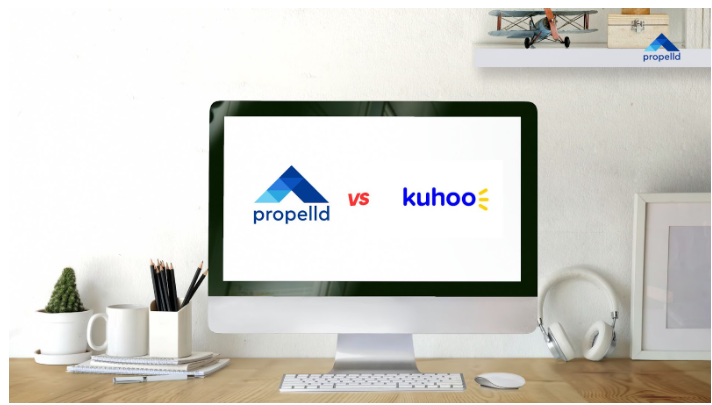Managing your education loan can be stressful, especially when the terms offered by your current lender aren’t as favourable as they once seemed. The good news? You’re not stuck.
Education loan transfer, also known as education loan takeover, allows you to shift your existing loan from one bank to another, often getting better interest rates or more flexible repayment options.
In this blog, we'll walk you through everything you need to know about transferring your loan and how it works.
What is an Education Loan Transfer?
Education loan transfer simply moves your existing loan from one bank to another. It’s typically done when the new bank offers lower interest rates, better loan terms, or more flexibility, making it easier for you to repay the loan. The bank taking over your loan pays off your old lender, and you begin repaying the new bank under the revised terms.
Can We Transfer Loan from One Bank to Another?
Absolutely! Transferring your loan from one bank to another is possible, and many students and parents do so to secure better deals. Most banks in India and globally offer this service as part of their lending products, with the Reserve Bank of India (RBI) setting clear guidelines that govern this process.
If you're planning to switch your lender, understanding the complete education loan balance transfer process is essential to make a cost-effective and seamless transition.
Get Education Loan for Any College in India. 100% Fees Financed- Propelld Education Loan
Key Benefits of an Education Loan Transfer

- Reduced interest rates
- Lower EMIs (Equated Monthly Instalments)
- Longer repayment tenure
- Option to consolidate multiple loans into one
Also Read: Education Loan by the Government: Eligibility and Application 2025.
How to Transfer a Loan from One Bank to Another?

Transferring an education loan involves several steps, but it's not as complicated as it might sound. Here’s a simple step-by-step guide:
1. Compare new loan offers
Research multiple banks and compare their interest rates, processing fees, and repayment terms.
2. Check your eligibility
Each bank has its eligibility criteria, typically based on your repayment history, credit score, and financial background.
3. Apply for the takeover.
Submit a loan transfer application and the necessary documents to the new bank.
4. Get approval
Once approved, the new bank will issue a sanction letter stating the new loan terms.
5. Closure of the old loan
The new bank disburses the loan amount directly to your current bank to close the existing loan.
6. Start repaying your new lender
You now repay the new lender as per the revised EMI schedule.
Suggest Read: Education Loan Scheme by Narendra Modi: List of Banks 2025
Get upto 100% Education Fees Financed with Propelld. Simplified Processing Dedicated Support.
Eligibility Criteria for Education Loan Transfer
Before transferring your loan, you need to meet some eligibility requirements. Here’s what banks typically look for.
Also Read: Jansamarth Education Loan: Eligibility, Documents and How to Apply.
Minimal Documentation. Higher Chances of Approval. Easy Online Processes. Check Your Eligibility.
Documents Required for Education Loan Transfer
When transferring your education loan, the bank will request documents to complete the process.
To successfully transfer your education loan, you’ll need to arrange key documents required for education loan such as the original sanction letter, repayment history, and collateral papers.
Get your Loan Disbursed 10 times Faster than Banks. Apply Now.
Current Interest Rates on Education Loans in India

Banks in India offer various interest rates on education loans. Here’s a look at some of the major banks and their rates:
Remember, the interest rate you receive will depend on several factors, including your credit score, loan amount, and repayment tenure.
To stay ahead of fluctuating rates, it's important to know how to get the best education loan interest rates by comparing lenders and understanding what influences rate changes.
Suggest Read: Education Loan Scheme by Narendra Modi: List of Banks 2024
How to Get a Lower Interest Rate During Education Loan Transfer?
When you’re considering an education loan transfer, here are a few tips to help you secure a better deal:

1. Negotiate with your current bank first
Before transferring, try negotiating a better rate with your existing bank. They may offer a lower rate if they know you’re considering leaving.
2. Check your credit score
A higher credit score (750 and above) can help you get lower interest rates.
3. Look for a particular scheme
: Some banks offer reduced rates for specific courses or institutions.
4 Consider government schemes
The Central Sector Interest Subsidy Scheme (CSIS) offers interest subsidies on loans for economically weaker students in India.
When Should You Consider Transferring an Education Loan?
You should think about transferring your education loan if:
- Your current bank charges a high interest rate, and you’ve found better rates elsewhere.
- Your EMI payments are too high, and you’d like to extend your repayment tenure to reduce the monthly burden.
- You want to consolidate multiple education loans from different banks into one.
- Your current bank's customer service or flexibility isn’t meeting your needs.
Is Education Loan Transfer Right for You?
Transferring your education loan is an excellent option if you:
- Are struggling with high interest rates.
- Need more flexibility in terms of EMI or loan tenure.
- Want to consolidate multiple loans into one?
However, it’s essential to weigh the processing fees, penalties, and other charges before switching. Always compare multiple offers and ensure that the new terms are genuinely better.
Difference Between Education Loan Transfer and Education Loan Takeover
Though often used interchangeably, there’s a subtle difference between education loan transfer and education loan takeover:
Get an Education Loan for Any College in India. 100% Fees Financed- Propelld Education Loan.
What Students Are Discussing About Transferring an Education Loan
Social media platforms like Quora provide a window into common student concerns about education loan transfers and repayment challenges.
A Quora user in Financially Fresh
Answered by Jeyakumar G, Nov 27, 2023
Question:
“Can we transfer my education loan to another bank if my EMI has started already? What is the procedure?”
Answer:
“If it is a clean loan (no property mortgaged), no bank will take over. In India, there are no rules for transferring unsecured education loans between banks. However, if it is a secured education loan (property mortgaged), there is a possibility. You can approach another bank and request a mortgage loan (loan against property). If the new bank is satisfied with your records, they may take over the education loan from the first bank, and your EMI will continue with the new bank under a mortgage loan arrangement.”
Insights
- Unsecured education loans cannot be transferred once EMIs start.
- Secured loans with property collateral may be transferred, usually converted into a loan against property.
- The new bank’s approval depends on your financial history and documentation.
Pro Tip
If EMIs are a burden, first try to negotiate with your existing bank for lower interest or longer tenure. If you have collateral, compare offers from multiple banks before opting for a transfer.
Challenges You Might Face During an Education Loan Transfer

Although transferring your loan sounds appealing, it’s not without its challenges:
1. Processing fees
Some banks charge processing fees (typically 0.5% to 1% of the loan amount) for the transfer.
2. Hidden charges
Check for hidden costs like foreclosure penalties or prepayment fees that could affect your savings.
3. Approval delays
The transfer process can take time, and delays might result in missed EMIs or penalties.
4. Eligibility issues
Poor credit history or insufficient documentation could result in your application being rejected.
An education loan transfer can provide significant financial relief, especially if you're paying a high interest rate or struggling with EMIs. By understanding the process, researching banks, and comparing terms, you can take control of your loan and reduce your financial burden.
Propelld offers student-specific education loans, which you can choose according to an assessment of direct or indirect liabilities in education loans.













.svg)